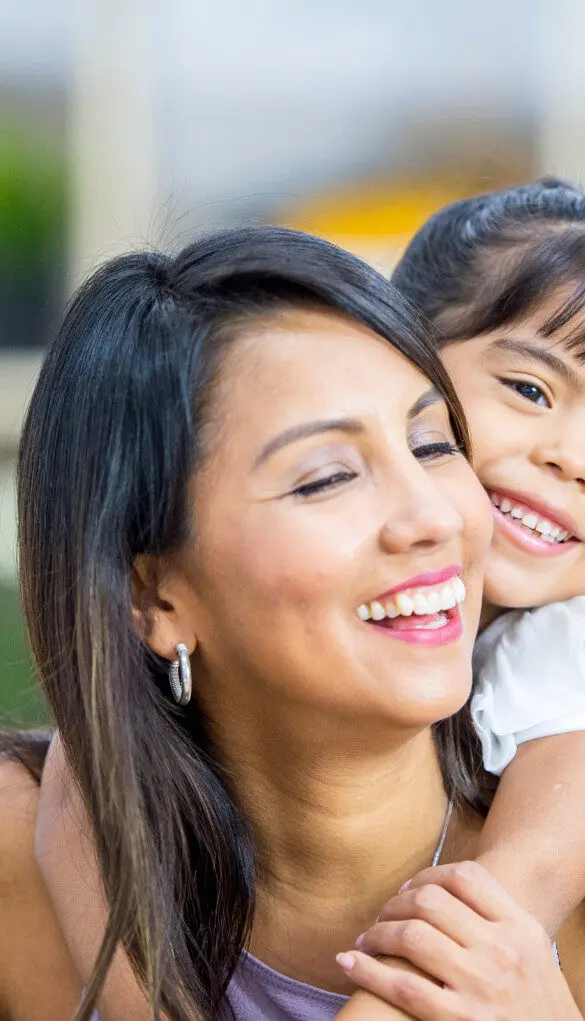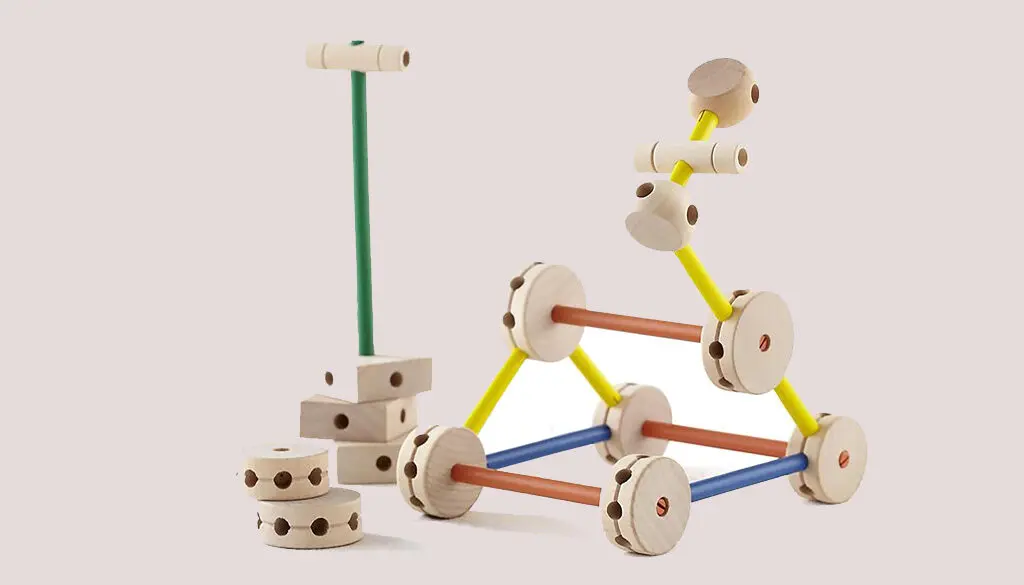Building a strong bond with your child is key in mindful parenting. It’s about encouraging good behavior instead of punishing bad ones. Positive words help create a supportive space where kids can grow and succeed.

Positive phrases can greatly influence a child’s growth and actions. They guide kids towards better behavior without using harsh commands like “no.”
Key Takeaways
- Positive language can nurture good behavior in children.
- Mindful parenting encourages a deep, trusting relationship with your child.
- Using positive phrases can redirect children’s behavior effectively.
- A supportive environment is crucial for a child’s development.
- Positive parenting phrases can reduce the need for negative commands.
The Power of Words in Parenting
The words we choose in parenting deeply affect our kids’ emotional and mental growth. Our communication can either build a supportive atmosphere or cause stress and negativity.
How Language Shapes Children’s Development
Studies reveal that the language we use with our kids greatly impacts their growth. Positive communication boosts their self-confidence, promotes teamwork, and aids in learning important life skills.
For example, using positive words and encouragement helps kids manage their feelings. It also inspires them to solve problems and think deeply about their actions.
The Problem with Overusing “No”
Many parents often say “no” too much. While it’s needed to set limits, saying “no” too often can harm. It can lead to:
- Children becoming more resistant and defiant
- Less creativity and curiosity
- A negative mood that hurts the parent-child bond
By using different words and explaining things, we can avoid these problems. This approach makes our homes more peaceful and loving.

Understanding Positive Parenting Philosophy
Positive parenting believes that kids behave better when they feel valued and understood. It aims to create a supportive space for kids to grow emotionally and socially.

Core Principles of Authoritative Parenting
Authoritative parenting mixes warmth and clear rules with high expectations. This balance helps kids learn to control themselves and feel responsible.
The main principles are:
- Setting clear boundaries and expectations
- Being responsive to children’s needs and emotions
- Encouraging independence and decision-making
- Modeling positive behavior
Benefits for Children’s Emotional Intelligence
Positive parenting is key in boosting kids’ emotional smarts. By recognizing and accepting their feelings, parents help kids better handle their emotions.
| Emotional Intelligence Aspect | Positive Parenting Approach | Benefit to Children |
|---|---|---|
| Emotion Recognition | Labeling and validating emotions | Better understanding of their feelings |
| Emotion Regulation | Teaching coping strategies | Improved self-control and calmness |
| Empathy | Modeling empathetic behavior | Stronger, more meaningful relationships |
Positive parenting creates a caring environment for kids’ emotional and social growth. It boosts their emotional smarts and strengthens the parent-child bond.
Why Alternatives to “No” Matter
The words we choose when speaking to our children are very important. They can either help or hurt their confidence and problem-solving skills. As parents, it’s crucial to understand how our words affect their growth.
The Psychological Impact of Negative Language
Using negative words, especially “no,” can deeply affect a child’s feelings. Research suggests that too much negative talk can lower their self-esteem and make them more anxious. A child who always hears “no” without any other options might feel ignored and not valued.
As
“Children are not likely to live up to what you say they can do, but they are likely to live up to what you say they cannot do.”
This quote shows how powerful our words are in shaping a child’s view of themselves and what they can do.
Building Problem-Solving Skills Through Positive Communication
Positive language, however, can help children solve problems and grow in confidence. By giving them choices and explanations, parents can help them think for themselves and make smart choices. For example, instead of saying “no” to a child who wants to play with something fragile, a parent could say, “Let’s find a safe toy to play with.” This not only changes the child’s behavior but also teaches them about safety and responsibility.
Positive reinforcement is a key part of parenting. By focusing on what children can do, parents create a supportive and positive space. This way, children feel more confident and are encouraged to explore and learn.
- Encourages critical thinking
- Fosters a positive environment
- Builds confidence in children
Effective Positive Parenting Phrases That Transform Discipline
The words we choose as parents are key in shaping our kids’ emotional smarts and actions. Using positive phrases helps create a supportive space for growth. This environment is vital for our children’s healthy development.
The Science Behind Positive Reinforcement
Positive reinforcement is a strong tool in teaching good behavior. It links good actions to positive results. Studies show it boosts self-confidence, better behavior, and stronger parent-child bonds. By praising what our kids do right, we make our homes more positive.
| Positive Reinforcement Technique | Effect on Children |
|---|---|
| Praise for effort, not just results | Encourages persistence and resilience |
| Specific, genuine praise | Boosts self-esteem and confidence |
| Non-verbal positive reinforcement (e.g., hugs, smiles) | Strengthens emotional bond between parent and child |
Creating a Growth Mindset Through Language
Language shapes our kids’ mindset. Using phrases that promote a growth mindset helps them see their abilities can grow. This mindset leads to a love of learning, resilience, and success.
“You really worked hard on this, didn’t you?” is a great example. It praises effort over natural talent. Such phrases show kids that their hard work and effort are what lead to success.
By using positive phrases every day, we boost our kids’ emotional smarts and growth mindset. This method not only improves discipline but also makes our family environment more positive and supportive.
Phrase #1: “Let’s Try This Instead”
“Let’s try this instead” is a great positive parenting phrase. It’s a better choice than saying “no”. This phrase helps guide children’s actions in a good way.
It helps kids think outside the box and solve problems. It’s a simple yet effective tool for many situations. It works for both everyday tasks and tough behaviors.
When to Use This Phrase
This phrase is useful in many situations. It works well when kids do things they shouldn’t, like throwing toys or not sharing.
- During mealtime, when a child is being fussy about food.
- When a child is insisting on playing with something that’s not safe.
- In situations where a child is refusing to follow a rule or instruction.
Real-Life Examples and Scenarios
Here are some examples of when “Let’s try this instead” works well:
| Situation | “Let’s Try This Instead” |
|---|---|
| A child is throwing blocks. | “Let’s try building a tower with these blocks instead.” |
| A child is refusing to put on a coat. | “Let’s try wearing this cozy sweater instead.” |
| A child is drawing on the wall. | “Let’s try drawing on this paper instead.” |
Why It Works Better Than “No”
Saying “no” can upset kids and lead to tantrums. “Let’s try this instead” is a positive way to change their actions. It doesn’t make them feel bad.
This method lowers conflict and makes a better atmosphere. It helps kids want to listen and follow rules.
Using “Let’s try this instead” helps parents build a stronger, more positive bond with their kids.
Phrase #2: “How About We…”
The phrase “How about we…” is a game-changer in parenting. It changes how we talk to our kids. It’s a key tool in our parenting kit.
Offering Choices Instead of Restrictions
“How about we…” lets parents offer choices, not just say no. Kids feel more in charge and are more willing to listen. For example, “How about we play with this toy instead?” redirects their play and boosts positive talk.
Age-Appropriate Applications
The use of “How about we…” changes with a child’s age. Young kids find it easier to make choices. Older kids get to help plan bigger things, like the weekend.
“The way we talk to our children becomes the way they talk to themselves.”
Building Decision-Making Skills
Using “How about we…” helps kids learn to make decisions. It teaches them to think about their choices and other options. This skill is vital as they grow, helping them make smart choices in life.
In short, “How about we…” is more than a phrase. It’s a positive way to discipline and talk to kids. It helps create a supportive place for kids to grow and succeed.
Phrase #3: “When You’re Done With…”
Teaching kids patience and responsibility is easy with phrases like “When you’re done with…”. It’s great for daily routines and activities. It helps kids understand the order and finish things.
Teaching Sequence and Patience
“When you’re done with…” helps kids focus on one task at a time. It teaches them to follow a sequence and wait patiently. This reduces impulsive behavior.
For example, saying “When you’re done with your homework, you can play outside” shows kids there’s a sequence. They must finish one task before moving on.
Practical Situations for This Approach
This phrase works in many situations, like meal times, homework, or activities. Here are a few examples:
| Situation | Example Phrase | Benefit |
|---|---|---|
| Mealtime | “When you’re done with your dinner, you can have dessert.” | Encourages eating a balanced meal. |
| Homework | “When you’re done with your homework, you can watch TV.” | Promotes completing tasks before leisure. |
| Playtime | “When you’re done with your toys, we can clean up together.” | Fosters a sense of responsibility. |
Fostering Responsibility Through Language
Using “When you’re done with…” helps parents teach responsibility. It shows kids they’re in charge and accountable for their actions.
For example, “When you’re done with your chores, you can take a break” teaches kids to finish tasks. It also gives them a sense of accomplishment and responsibility.
In conclusion, “When you’re done with…” is a key phrase in positive parenting. It teaches kids about sequence, patience, and responsibility. By using it daily, parents can encourage positive behavior and boost their children’s confidence.
Phrase #4: “I Understand You Want To…”
Using empathetic language can really change a child’s behavior. The phrase “I understand you want to…” is key in positive parenting. It lets parents show they get their child’s feelings and still set limits.
Validating Feelings While Setting Boundaries
When kids feel heard, they’re more likely to listen to their parents. This phrase shows they’re understood while explaining why some rules exist. For example, “I understand you want to play outside, but it’s getting dark and not safe.” This way, kids learn to respect their feelings and the rules.
“When we validate our children’s feelings, we help them develop a sense of security and self-worth.”
Developing Emotional Intelligence
Emotional intelligence is key for kids to grow up well. It helps them understand and handle their feelings. By saying “I understand you want to…”, parents help kids see their feelings are real but some actions aren’t right.
- Recognizing and labeling emotions
- Understanding the impact of their actions
- Developing self-regulation skills
Strengthening Parent-Child Connection
This phrase helps with discipline and makes the parent-child bond stronger. Showing empathy shows kids their feelings matter. This leads to a better relationship where kids are more likely to listen and follow rules.
In short, “I understand you want to…” is more than a phrase. It’s a way to teach kids about emotional intelligence, cooperation, and a closer bond with their parents.
Phrase #5: “This Is How We Stay Safe”
Talking about safety in a positive way helps kids learn important life lessons. Phrases like “This is how we stay safe” teach kids about safety without being negative.
Safety-Focused Communication
Teaching kids about safety in a positive way helps them remember safety rules better. This method not only educates but also builds trust between kids and parents.
For example, instead of saying “don’t touch the stove,” say “This is how we stay safe in the kitchen: we keep our hands away from the stove when it’s on.” This way, kids learn a safety rule and understand its importance.
Teaching Values Through Explanation
Explaining safety rules helps kids understand the values behind them. It’s not just about following rules; it’s about knowing why they’re important.
“The way we talk to our children becomes the way they talk to themselves.” – Peggy O’Mara
This quote shows how important our words are when talking to kids. By explaining safety rules, parents help kids internalize these values.
| Safety Rule | Negative Phrase | Positive Phrase |
|---|---|---|
| Kitchen Safety | “Don’t touch the stove.” | “This is how we stay safe in the kitchen.” |
| Road Safety | “Don’t run into the street.” | “We stay safe on the sidewalk.” |
Building Trust Through Honesty
Using positive language when talking about safety teaches kids and builds trust. When parents explain safety rules, kids trust their guidance more.
Mindful parenting, like using positive language, creates a safe and supportive environment. This is key for strong, healthy parent-child relationships.
Mindful Parenting Strategies to Support Positive Communication
Mindful parenting can change the game for families wanting better communication. It makes parents more aware and present with their kids. This leads to a more supportive and understanding home.
Practicing Presence in Parent-Child Interactions
Being fully present with kids is key for good communication. It means no distractions, like phones, and focusing on the moment. This way, parents can understand their child’s needs better.
Being present builds trust and strengthens the bond between parents and kids. It shows kids they are valued and heard.
Responding Rather Than Reacting
Mindful parenting teaches parents to respond, not react. Reacting can lead to impulsiveness and emotional issues, making things worse. Responding means taking a moment to think before acting.
This method helps manage tough behaviors and teaches kids about emotional control and solving problems.
Self-Regulation Techniques for Parents
Parents can use self-regulation techniques to control their emotions. Deep breathing, mindfulness meditation, and pausing before answering are great tools. They help parents stay calm and teach kids the same.
By managing their emotions, parents create a calm space for their kids. This shows kids how to handle emotions and supports a positive parenting plan.
Implementing Positive Parenting Phrases in Challenging Situations
When chaos hits, like during public meltdowns or fights between siblings, positive phrases can change everything. These words help calm tense moments and create a better space for kids to learn and grow.
Public Tantrums and Meltdowns
Dealing with tantrums in public is tough for parents. Saying “Let’s try this instead” or “I get that you’re upset” can really help. These phrases show you understand and offer a way out, which can stop things from getting worse.
- Stay calm and patient
- Acknowledge the child’s feelings
- Offer alternatives or solutions
Sibling Conflicts and Solo Parenting Challenges
Fights between siblings are common. Positive phrases can help solve these. For example, “I see you’re both upset. Let’s find a solution together” encourages working together.
Being a solo parent is hard, but positive words can help. Saying “Let’s work together on this” makes kids feel included and more willing to listen.
Bedtime and Morning Routines
Smooth bedtime and morning routines are key for a peaceful home. Positive phrases make these times easier. Saying “When you’re done with your bath, it’s time for bed” sets clear expectations.
Positive language during these times also helps kids feel responsible. Saying “You’re doing a great job getting ready” boosts their confidence and encourages teamwork.
Some good strategies for these routines include:
- Creating a consistent schedule
- Using positive reinforcement
- Preparing children in advance for transitions
By using positive phrases in daily routines and tough moments, parents can build a supportive and understanding home. This approach not only solves immediate problems but also helps kids grow emotionally and socially over time.
Conclusion: Creating a Peaceful Home Through Positive Communication
Using positive parenting phrases and mindful strategies can make your home more peaceful and loving. This approach helps improve relationships between parents and children. It also helps children grow emotionally intelligent and responsible.
Experts in parenting stress the need for positive communication. By following good parenting guidelines and using positive words, parents can lower conflicts. This makes the home environment more harmonious.
As parents keep using these strategies, they will see big changes in their child’s behavior and their relationship. By choosing positive words, parents can build a supportive and loving space for everyone in the family.






